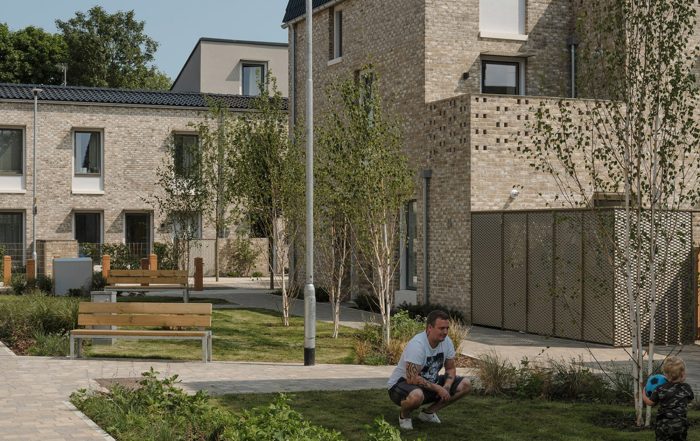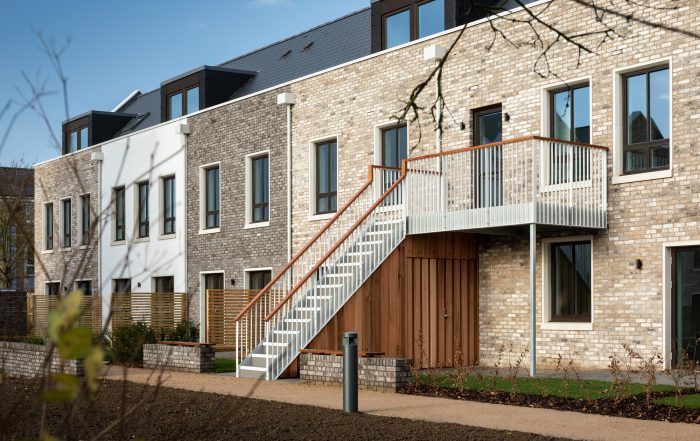20th November 2019
OUR PUBLIC LAND IS BEING SQUANDERED.
20th November 2019
OUR PUBLIC LAND IS BEING SQUANDERED.
Share
The UK’s public land bank is being steadily sold off in the country’s largest process of privatisation. Over four decades since Thatcher, it has shrunk by 2 million hectares, a rate of about 70,000ha a year.
Framed as a sensible use of surplus assets, sale of public land has become an integral part of housing policy. The government’s Public Land for Housing programme aims to deliver 160,000 new homes from sale of public land from 2015 to 2020, while raising £5 billion in receipts. And stretched public bodies are happy to oblige: ‘selling the family silver’ has become vital to funding local services in the era of austerity.
But, in the dash for new housing, quality and design are scarcely considered. Indiscriminate land sales do little more than facilitate the poorly designed, unaffordable and car-dependent forms of housing that survey after survey shows most people, given a real choice, would rather not live in. Public bodies might argue that their local plans set their standards for development but this ignores the power they wield as landowners.
Like many acts of privatisation, the decimation of the public land bank is both short-sighted and irreversible. Land is the ultimate non-renewable resource. And, when public land is sold, it leaves the system for good.
Of course, there are legal protections around the disposal of public assets. Section 123 of the 1972 Local Government Act requires local authorities to sell land for ‘the best consideration reasonably attainable’. Put simply, this requires them to behave in the same way as any private landowner: to obtain the highest possible price for its land, with no regard to other considerations. Local benefit, longer-term value and sustainability are irrelevant.
In spite of this, some public bodies have adopted more enlightened approaches. Lewisham council identified the benefits of self-build housing and made land available on terms that would enable community self-builders to access it.
Bristol City Council placed a value on social returns, selling land to the city’s community land trust for 100 per cent affordable homes.
And Transport for London, through its Small Sites programme, has engaged with smaller developers, with a focus on design quality, not just price.
While Treasury guidance supports such approaches (‘the valuation of a publicly owned asset is based on the interests of society as a whole, not the council alone’), there’s little to indicate that they’re even close to becoming mainstream. For most local authority officers, ever mindful of the district auditor, the easiest and lowest-risk way to sell land is to flog it to the highest bidder.
If we want better-designed, more sustainable homes that respond to the many and varied needs of the people who will live in them, then we should start by transforming the way we use the land that remains in public ownership.
Firstly, that means selling less of it, and the rise of direct development ventures such as Brick By Brick in Croydon is welcome. But, if it is to be sold, we should make it work much harder, by changing the rules – and the culture – around public land disposals.
How can this be achieved? The current, narrow requirement on public bodies to achieve best financial value should be scrapped in favour of a duty to demonstrate best social and environmental, alongside financial, outcomes – a ‘triple lock’ – on public land. Taking a holistic view of the value of development would no longer be just an option, but an obligation.
This change would place vision, quality, design and social outcomes at the heart of the process. It would create a level playing field, where all sorts of organisations, currently excluded from the land market, could compete effectively to acquire sites.
And it would have the potential to unleash a generation of SME developers, ethical investors, co-operative builders, cohousing groups and community land trusts, which, more than the Plc housebuilders, have the potential to help solve the UK’s housing crisis.
This article by Jonny Anstead was originally published in the Architects’ Journal.



